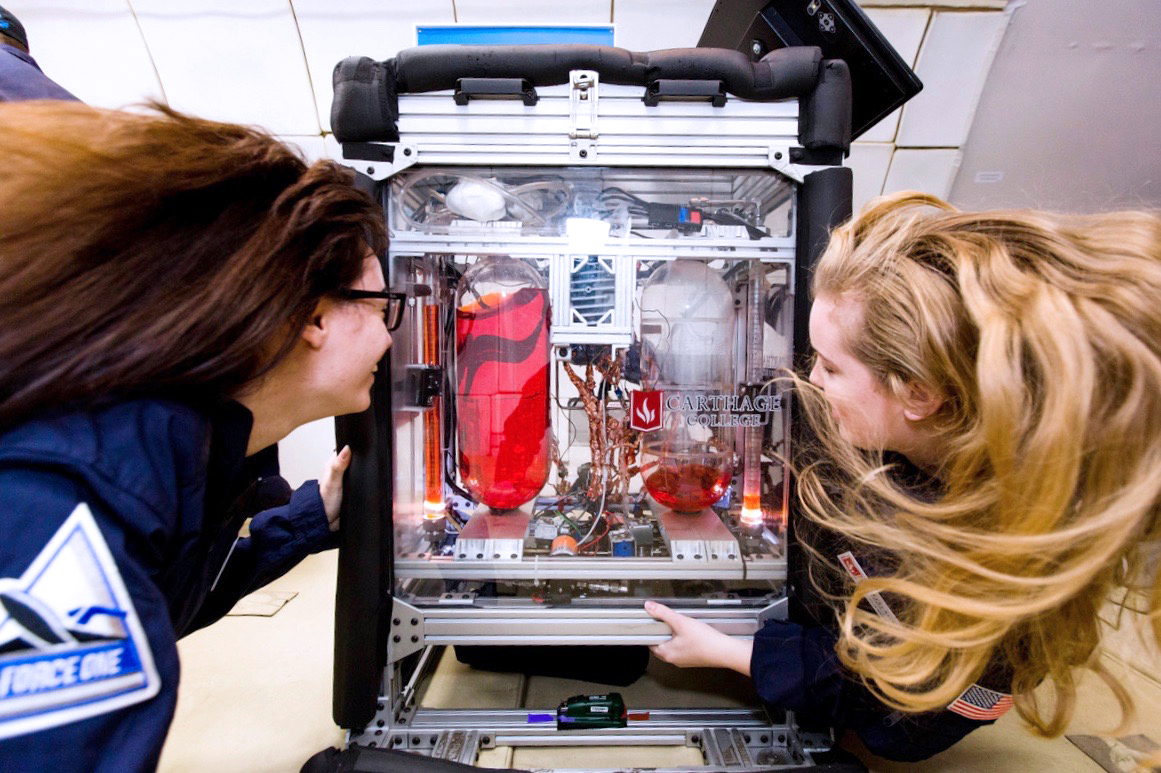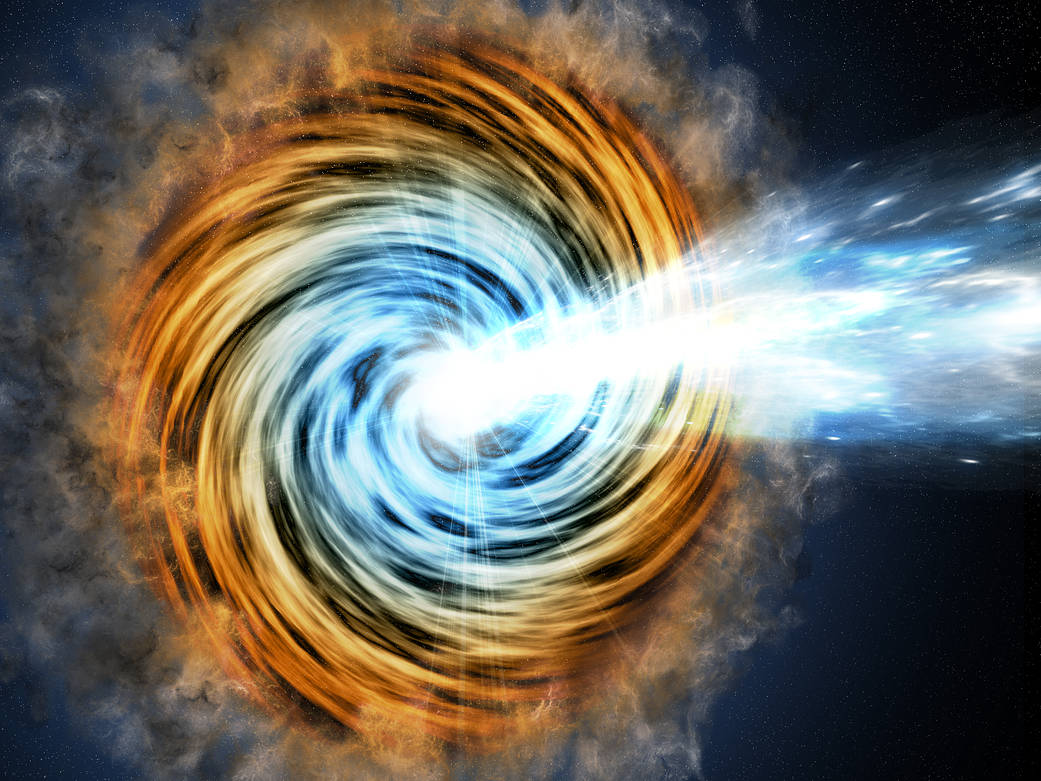Melissa Adams
University of Maryland, College Park
Transitioning from Extent Estimation to Individual Tracking Following an Orbital Break-up Event
Aaron Allred
University of Colorado, Boulder
Identification and Quantification of Fatigue Characteristics via a Deep Learning Methodology
Victoria Arias
University of Illinois at Urbana-Champaign
Micromechanical Response of Carbon Fiber Preform in High-Temperature Oxidizing Environments
Zach Ayers
Purdue University
High-Fidelity Laser-Based Imaging of Mixing Effects on Rotating Detonation Combustion for Space Propulsion
Victor Azevedo
University of Illinois at Urbana-Champaign
Novel Particle Approaches for Modeling Electrospray Propulsion Concepts
Alexander Baikovitz
Carnegie Mellon University
Exploratory Planning for Search and Detection of Subsurface Voids Using Ground Penetrating Radar (GPR)
Nathan Ballintyn
Purdue University
Study of Detonation Wave Attenuation in Two-Phase Flows
Amanda Braun
Purdue University
In-Situ Temperature, Velocity, and Density Measurements in High-Speed Flows Using Burst-Mode Filtered Rayleigh Scattering
Brady Bresnahan
University of Minnesota
In-Situ Surface Modification of Multi-Principal Element Alloys for Enhanced Durability in Extreme Environments
Kristen Bruchko
University of Colorado, Boulder
Trajectory Construction within Multi-Body Systems via Roadmap Generation
Amelia Bruno
Massachusetts Institute of Technology
Development and Optimization of a Bimodal Ion-Chemical Thruster System Using Novel Ionic Liquid Monopropellants
Naia Butler-Craig
Georgia Institute of Technology
Characterization of Inner Front Pole Cover Erosion in Center Mounted Cathode Hall Thrusters using Thompson Scattering
Tom Celenza
University of Pennsylvania
Knudsen-Pump-Based Propulsion for Atmospheric and Martian Exploration
Mark Ciappesoni
University of Miami
Ink-Jet Printable Infrared Detectors for In-Space Deployment
Ciera Cipriani
Texas A&M University
Post-Processing-Free 3D Printing for Low Mass, Multifunctional Polymer Composites
Peter Collins
Penn State University
Development of In-Situ Concrete Materials for Lunar Infrastructure
Joseph Colosimo
Penn State University
Developing Next-Generation X-Ray Hybrid CMOS Detectors for Future Observatories and Investigating Their Low-Energy Response
David Cunningham
University of Texas at Austin
Relative Motion and Proximity Operations Beyond Earth Orbit
Rosemary Davidson
Massachusetts Institute of Technology
Bayesian Uncertainty Propagation Using Multi-Fidelity Subsystem Models in Design of Precision-Pointed Space Telescopes
Blake Duschatko
Harvard University
Accelerated Computational Design of Multifunctional Polymeric Materials with Machine Learning Dynamics
Bryn Fanger
University of Texas at Austin
Improvements to Multi-shooting Differential Dynamic Programming for Cislunar Applications
Destiny Fawley
University of Illinois at Urbana-Champaign
Utilization of Magnetohydrodynamics for Trajectory Control to Land High-Mass Payloads on Mars
Tate Gill
University of Michigan
Exploration of the Fundamental Limitations on Plasmoid Thrusters as a Next-generation In-Space Propulsion Concept
James Hardy
University of Colorado, Boulder
Optimizing Plant Canopy Photon Capture Efficiency for Bioregenerative Life Support Systems
Adam Herrmann
University of Colorado, Boulder
Learning Agent for Autonomous Spacecraft Activity Planning and Orbit Selection
Madison Hetlage
Texas A&M University
Controllable Excited State Atomic Barium Filter for Remote Sensing and Ground Testing
John Holoubek
University of California, San Diego
Development of Novel Electrolytes for High-Energy Lithium Metal Batteries Operating at Ultra-Low Temperatures
Paul Horton
Arizona State University
PLANET: Planner-in-the-Loop Assistant for Novelty Extraction and Targeting
Emily Jewell
Stanford University
Advancing Computational Methods for Supersonic Retropropulsion
Logan Kossel
University of Wisconsin-Madison
Low Mass Long Distance Effective Heat Transfer via Cryogenic Pulsating Heat Pipes
Emily Kurfman
University of Kansas
Development of an Integrated System for Cell Analysis and Profiling by Capillary Electrophoresis-Mass Spectrometry
Ryan LaRose
Michigan State University
Making Quantum Computers Less Noisy and More Useful
Max Lien
University of Southern California
Polarization-Sensitive Focal Plane Array for Compact Imaging Spectrometers
Matthew Liu
Stanford University
Electrochemical Membrane Reactors for In-Situ Resource Utilization of Wastewater in Space
Josh Ludwigsen
Purdue University
Advanced Measurements in Flows with High-Temperature Particulate and Gas Products
Nguyen Ly
Stanford University
High-Fidelity Combustion Modeling for LOX/Methane In-Space Propulsion Systems
James Male
Northwestern University
Defect Engineering for More Reliable and Efficient p-type Thermoelectric Materials
Corey Marcus
University of Texas at Austin
Direct Visual-Inertial-LIDAR SLAM and Autonomous Landing Site Selection and Guidance for Unknown Environments
Nima Mohseni
University of Michigan
Adaptive Disturbance Rejection for High-Resolution Imaging Systems
Margaret Mooney
Western Michigan University
Turbulence and Energetic Ion Production in the Partially Magnetized Hollow Cathode Plume
Hayden Morgan
Texas A&M University
Optically Coupled Laser and Ultra-cold Particle Beam for Breakthrough In-space Propulsion
Omkar Mulekar
University of Florida
All Terrain Lunar Landing Using Adjustable Strut Systems and Stereo-Vision with Machine Learning Based Navigation
Jordan Murphy
University of Colorado, Boulder
Machine Learning Applications for Spacecraft Mission Design in Complex Environments
Paul Nadan
Carnegie Mellon University
Lightweight Free-Climbing Robots for Extreme Terrain Exploration
Joseph Peoples
Purdue University
Ultra-Efficient Micropatterned Variable Emissivity Coatings Engineered for Extreme Environments
Curtis Purrington
Colorado School of Mines
Locating and Identifying Lunar Volatiles using Heat and Mass Transfer
Parker Roberts
University of Michigan
Incoherent Laser Thomson Scattering Experiments for Predictive Hall Thruster Modeling
Juan Sebastian Rubio
Johns Hopkins University
High-Speed Multiphase Flow in Plume-Surface Interaction
Christian Ruud
Penn State University
Micro-Concentrator Photovoltaics for Extreme Space Environments
Alexander Sarvadi
University of North Texas
Microgravity Vortex Phase Separator for Liquid Amine CO2 Removal System
Stephanie Schneider
Stanford University
Versatile Inverted-Hand Robotic Design for Mobile Manipulation in Space Environments
Mujan Seif
University of Kentucky
Modeling Multi-Scale Material Response of Foam Core Sandwich Panels for MMOD Protection Against Hypervelocity Impacts
Emily Sheetz
University of Michigan
FAME: Fast Affordance Manipulation Execution
Trevor Shimokusu
William Marsh Rice University
Jumping Droplet Thermal Diodes for Spacecraft Thermal Control
Benjamin Simpson
Texas A&M University
Supporting Early Mission Concept Evaluation through Natural Language Processing
Seth Strayer
University of Pittsburgh
Development of an Integrated Part-Scale Process-Structure-Fatigue Simulation Framework for Certification of Laser Powder Bed Additive Manufactured Components
Madison Sutula
Massachusetts Institute of Technology
A Diamond Nanophotonics Platform for Quantum Communication with Multiplexed Qubit Repeaters
Michelle Tran
Oregon State University
Rapid and Minimally Invasive Glass Microfiber-Based Biodosimeter for In-Flight Quantification of Radiation Exposure from Finger Prick Blood Samples
Nolan Uchizono
University of California, Los Angeles
Improving Performance and Lifetime of High-Isp Electrospray Propulsion
Christian Vazquez
University of Central Florida
Exploiting Dynamic Magnetic Fields for New Magnetorheological Fluid Damping Capability
Akane Wakai
Cornell University
Design of Metastable High Entropy Alloys for Additive Manufacturing
Osmond Wen
California Institute of Technology
Detectors for Hard X-ray Imaging Velocity Tomography of Supernova Remnants
Kjell Westra
Washington State University
Proof-of-Concept Reusable Origami Bladder for Cryogenic Propellant Acquisition




























